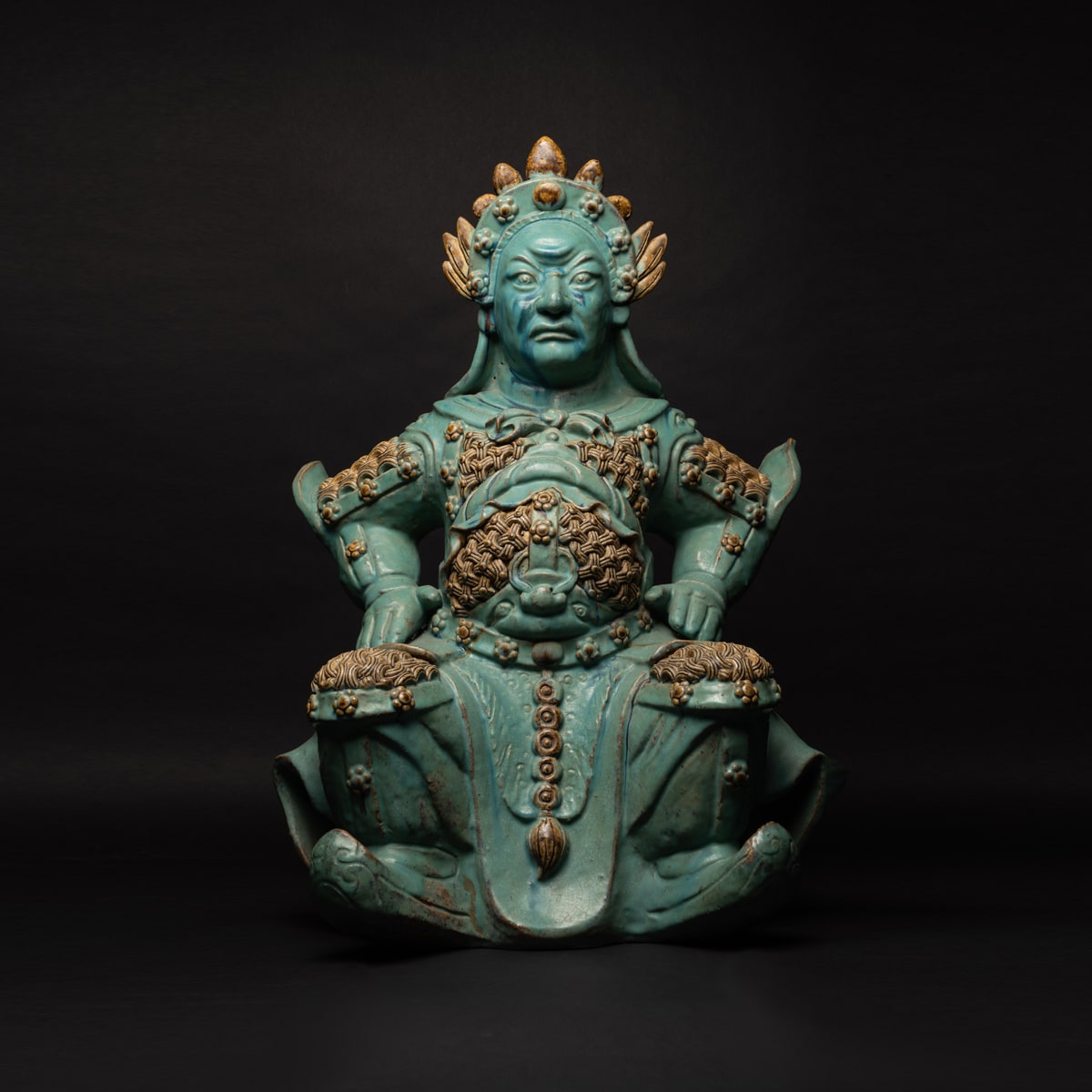Turquoise statue of a seated warrior, 1500 BCE - 1800 CE
Glazed Terracotta
71.1 x 45.7 cm
28 x 18 in
28 x 18 in
RL.0955
Further images
Turquoise glaze in ceramics is also called peacock-green or peacock-blue and quite often the glazing is characterised by a type of crackle or crazing which is known as 'crackled ice'...
Turquoise glaze in ceramics is also called peacock-green or peacock-blue and quite often the glazing is characterised by a type of crackle or crazing which is known as "crackled ice" or "fish roe" crackle. The turquoise glaze owes its color to copper oxide in an alkaline glaze mix. The use of turquoise glaze goes back a long time in the history of Chinese ceramics, at least as early as the Tang dynasty. The interest for this particular colour seems to have started and to have been shared with Middle Easter potters though the methods employed as to arrive at similar results were quite different.
In addition, the technology available also differed, depending on what material the glaze were to be applied on to.
One of the curiosities of the ways that Chinese potters used the material was that saltpetre (potassium nitrate) was often used totally unfitted, although it is essentially a soluble material. The saltpeter was simply mixed with quartz and water (and sometimes with lead oxides or carbonates) to create such low-temperature glazes.
In addition, the technology available also differed, depending on what material the glaze were to be applied on to.
One of the curiosities of the ways that Chinese potters used the material was that saltpetre (potassium nitrate) was often used totally unfitted, although it is essentially a soluble material. The saltpeter was simply mixed with quartz and water (and sometimes with lead oxides or carbonates) to create such low-temperature glazes.











